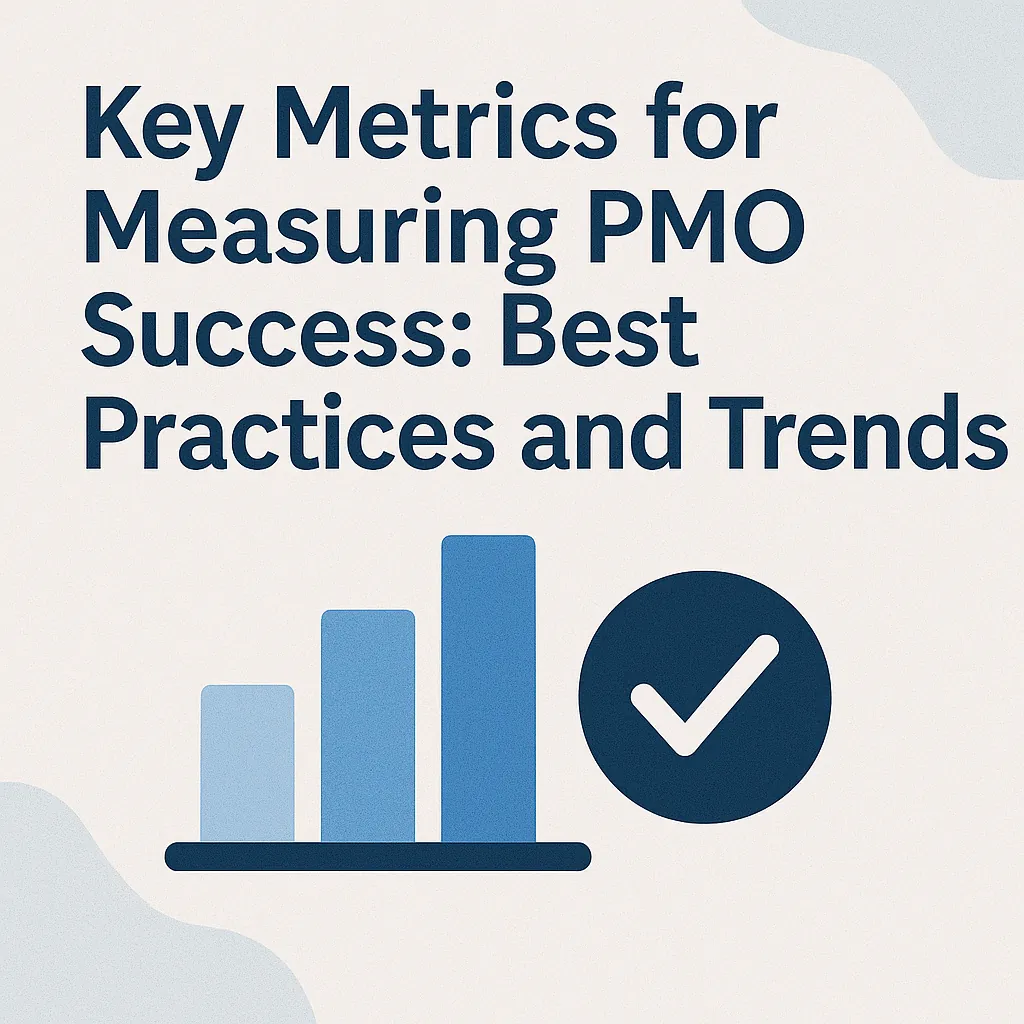Introduction to PMO Models
The Project Management Office (PMO) plays a pivotal role in ensuring that projects align with organizational goals and are executed efficiently. Understanding the various PMO models is essential for PMO managers and analysts as they seek to measure and enhance their effectiveness in today’s dynamic business environment.
Defining PMO and Its Types
A Project Management Office (PMO) is a centralized unit within an organization that oversees project management practices, ensuring that projects are executed in alignment with the strategic objectives of the business. PMOs can be categorized into three primary types:
- Supportive PMO: This model provides support through best practices, training, and access to information. It has a low level of control and is often found in organizations that are less mature in project management practices.
- Controlling PMO: This type enforces compliance with project management standards and methodologies. It provides guidance and oversight, ensuring that projects adhere to established processes while still allowing some degree of autonomy.
- Directive PMO: The most authoritative model, a directive PMO directly manages projects and is responsible for their success. This type is typically found in organizations where project management is critical to achieving strategic goals.
The Role of PMOs in Organizations
PMOs serve several key functions within organizations, including:
- Standardization: They establish and maintain project management standards and methodologies, ensuring consistency across projects.
- Resource Management: PMOs help in the allocation and optimization of resources, ensuring that projects have the necessary support to succeed.
- Performance Monitoring: They track project performance against key performance indicators (KPIs), providing insights into project health and areas for improvement.
- Strategic Alignment: PMOs ensure that projects align with the organization’s strategic objectives, facilitating better decision-making and prioritization of initiatives.
Measuring PMO Effectiveness
To assess the effectiveness of a PMO, organizations must focus on key performance indicators (KPIs) that reflect its impact on project success. This involves:
- Defining Success Metrics: Establishing clear metrics that go beyond traditional measures of time, cost, and scope. This includes evaluating stakeholder satisfaction, project success rates, and alignment with strategic goals.
- Continuous Improvement: Regularly reviewing and analyzing project outcomes to identify trends and areas for enhancement. This data-driven approach allows PMOs to adapt and evolve in response to changing business needs.
- Stakeholder Engagement: Engaging with stakeholders to gather feedback on PMO performance and its contribution to project success. This helps in refining processes and ensuring that the PMO remains relevant and effective.
Understanding PMO models and their significance is crucial for PMO managers and analysts aiming to measure and enhance their effectiveness. By focusing on the right metrics and fostering a culture of continuous improvement, PMOs can significantly contribute to the success of projects and the overall strategic objectives of the organization.
Understanding Key Performance Indicators (KPIs)
Project Management Offices (PMOs), Key Performance Indicators (KPIs) serve as essential metrics that help evaluate the effectiveness and success of project management processes. KPIs are quantifiable measures that provide insights into how well an organization is achieving its key business objectives. For PMOs, these indicators are crucial for assessing performance, driving improvements, and demonstrating value to stakeholders.
Definition and Relevance of KPIs to PMOs
KPIs are specific metrics that reflect the critical success factors of an organization. In the context of PMOs, they are used to measure various aspects of project performance, including project completion rates, budget adherence, stakeholder satisfaction, and overall project success rates. By monitoring these indicators, PMOs can gain valuable insights into their operational effectiveness and identify areas for improvement [11][12].
The relevance of KPIs to PMOs lies in their ability to provide a clear picture of how well projects are being managed and whether they align with the strategic goals of the organization. Effective KPIs enable PMOs to track progress, make data-driven decisions, and enhance project delivery, ultimately contributing to the organization’s success [10][12].
Differentiating Between Qualitative and Quantitative KPIs
KPIs can be categorized into two main types: qualitative and quantitative.
- Quantitative KPIs are numerical metrics that can be measured and analyzed statistically. Examples include project completion time, budget variance, and return on investment (ROI). These metrics provide concrete data that can be used to assess performance objectively [3][15].
- Qualitative KPIs, on the other hand, are more subjective and often involve assessments of non-numerical factors. These may include stakeholder satisfaction, team morale, and the quality of project deliverables. While qualitative KPIs can be harder to measure, they are equally important as they provide insights into the overall health of the project and the satisfaction of those involved [11][15].
Both types of KPIs are essential for a comprehensive evaluation of PMO performance, as they together provide a balanced view of both the quantitative outcomes and qualitative experiences associated with project management.
Importance of Aligning KPIs with Business Objectives
Aligning KPIs with the broader business objectives is critical for PMOs to ensure that their efforts contribute to the organization’s strategic goals. When KPIs are directly linked to business objectives, PMOs can better demonstrate their value and impact on the organization. This alignment helps in prioritizing projects that are most beneficial to the business and ensures that resources are allocated effectively [11][12].
Moreover, aligning KPIs with business objectives fosters a culture of accountability within the PMO. It encourages teams to focus on outcomes that matter to the organization, thereby enhancing performance and driving continuous improvement. By regularly reviewing and adjusting KPIs in line with changing business priorities, PMOs can remain agile and responsive to the evolving needs of the organization [10][12].
Understanding and effectively implementing KPIs is vital for PMOs aiming to measure their success and enhance their contributions to the organization. By defining relevant KPIs, differentiating between qualitative and quantitative measures, and aligning these indicators with business objectives, PMOs can ensure they are positioned to deliver maximum value in today’s dynamic business environment.
Critical KPIs for Measuring PMO Success
The effectiveness of a Project Management Office (PMO) is increasingly gauged through specific Key Performance Indicators (KPIs). These metrics not only reflect the PMO’s operational efficiency but also its alignment with organizational goals. Here are the essential KPIs that PMO managers should diligently track to ensure success:
- Project Success Rate: This KPI measures the percentage of projects completed on time, within budget, and meeting the defined scope. A high project success rate indicates effective planning and execution, which are crucial for demonstrating the PMO’s value to the organization. It is essential to consider success beyond the traditional “iron triangle” of scope, schedule, and cost, incorporating stakeholder satisfaction as a key component of project success [2][6].
- Stakeholder Satisfaction and Engagement Levels: Understanding how stakeholders perceive the PMO’s performance is vital. Regular satisfaction surveys can provide insights into stakeholder engagement and help identify areas for improvement. High levels of stakeholder satisfaction often correlate with successful project outcomes and can enhance the PMO’s reputation within the organization [4][15].
- Resource Utilization and Allocation Efficiency: This metric assesses how effectively the PMO allocates resources across projects. Efficient resource utilization ensures that projects are adequately staffed and funded, which can lead to improved project outcomes. Tracking this KPI helps PMO managers identify bottlenecks and optimize resource distribution [10][14].
- Return on Investment (ROI): Calculating the ROI for projects managed by the PMO is crucial for demonstrating financial effectiveness. This KPI helps in assessing whether the benefits derived from projects justify the costs incurred. A positive ROI indicates that the PMO is contributing to the organization’s financial health and strategic objectives [9][13].
- Project Risk Management Effectiveness: This KPI evaluates how well the PMO identifies, assesses, and mitigates risks throughout the project lifecycle. Effective risk management can prevent project delays and budget overruns, thereby enhancing overall project success. Monitoring this metric allows PMO managers to refine their risk management strategies continuously [8][15].
- Quality of Project Deliverables and Adherence to Standards: Ensuring that project deliverables meet quality standards is essential for long-term success. This KPI can be measured through quality assurance processes and compliance checks. High-quality deliverables not only satisfy stakeholder expectations but also reduce the likelihood of rework and associated costs [5][14].
By focusing on these critical KPIs, PMO managers can gain valuable insights into their operations, drive continuous improvement, and ultimately enhance the PMO’s contribution to the organization’s success. Tracking these metrics will enable PMOs to adapt to the changing business environment and maintain their relevance in delivering value through effective project management.
Best Practices in KPI Selection and Measurement
The selection and measurement of Key Performance Indicators (KPIs) are crucial for assessing effectiveness and driving success. Here are some best practices to consider when identifying and managing KPIs in today’s dynamic business environment:
- Involve Stakeholders in the KPI Selection Process: Engaging stakeholders from various levels of the organization ensures that the selected KPIs align with broader business objectives and reflect the needs of different departments. This collaborative approach fosters buy-in and enhances the relevance of the metrics being tracked, ultimately leading to more effective project outcomes [1][5].
- Ensure KPIs are SMART: The SMART criteria—Specific, Measurable, Achievable, Relevant, and Time-bound—serve as a foundational guideline for KPI development. By ensuring that each KPI meets these criteria, PMOs can create clear and actionable metrics that provide meaningful insights into project performance and facilitate informed decision-making [3][9].
- Regularly Review and Adjust KPIs: The business landscape is constantly evolving, and so should the KPIs used to measure PMO success. Regular reviews of KPIs allow PMOs to adapt to changing business needs, ensuring that the metrics remain relevant and continue to drive performance improvements. This practice not only enhances the effectiveness of the PMO but also demonstrates its agility in responding to organizational shifts [2][10].
- Utilize Technology and Tools for Accurate KPI Tracking and Reporting: Leveraging technology can significantly enhance the accuracy and efficiency of KPI tracking and reporting. Various tools and software solutions are available that can automate data collection, provide real-time insights, and facilitate comprehensive reporting. By utilizing these technologies, PMOs can ensure that they are making data-driven decisions based on accurate and timely information [11][15].
By implementing these best practices, PMO managers and analysts can effectively select and measure KPIs that not only reflect the current state of project performance but also align with the strategic goals of the organization. This approach will ultimately contribute to the overall success and maturity of the PMO.
Trends Impacting PMO Metrics
Several trends are significantly influencing how Project Management Offices (PMOs) measure their success. Understanding these trends is crucial for PMO managers and analysts as they adapt their Key Performance Indicators (KPIs) to align with contemporary business needs. Here are the key trends shaping PMO metrics today:
- Shift Towards Agile Project Management: The adoption of agile methodologies is transforming traditional project management practices. This shift necessitates a reevaluation of KPIs to focus on metrics that reflect agility, such as team velocity, sprint completion rates, and customer satisfaction scores. Agile emphasizes iterative progress and responsiveness to change, which means PMOs must track how quickly they can adapt to new requirements and deliver value to stakeholders [2][3].
- Emphasis on Data-Driven Decision-Making: In today’s data-centric environment, PMOs are increasingly leveraging data analytics to inform their decision-making processes. This trend underscores the importance of KPIs that provide actionable insights, such as project completion rates, resource utilization, and return on investment (ROI). By utilizing data-driven metrics, PMOs can enhance their strategic alignment with organizational goals and drive continuous improvement [1][12].
- Focus on Soft Skills and Stakeholder Engagement: As project management evolves, there is a growing recognition of the importance of soft skills, such as communication, leadership, and emotional intelligence. PMOs are now measuring success not only through traditional metrics but also by assessing stakeholder engagement and satisfaction. This includes tracking feedback from stakeholders post-delivery and measuring the effectiveness of communication strategies [10][14].
- Role of Digital Transformation and Automation: The rise of digital tools and automation is reshaping how PMOs operate and measure success. Digital transformation enables PMOs to implement advanced project management software that provides real-time insights into project performance. Metrics such as project scorecards and dashboards are becoming essential for visualizing key KPIs, allowing PMOs to monitor trends and make informed decisions quickly [13][15]. Automation also streamlines processes, reducing manual effort and increasing efficiency, which can be reflected in performance metrics like time to market and cost savings [4][11].
As PMOs navigate these trends, it is essential to adapt their metrics to reflect the changing dynamics of project management. By focusing on agile practices, data-driven insights, stakeholder engagement, and leveraging digital tools, PMOs can enhance their effectiveness and demonstrate their value to the organization.
Key Takeaways for PMO Managers
- Tailor KPIs to Organizational Goals: Each PMO should select KPIs that align with its specific objectives and the broader goals of the organization. This ensures that the metrics are relevant and actionable.
- Engage Stakeholders: Continuous communication with stakeholders is essential for understanding their needs and expectations, which can directly influence project success and satisfaction.
- Focus on Continuous Improvement: Regularly reviewing and adjusting KPIs based on project outcomes and stakeholder feedback can lead to enhanced performance and adaptability in a changing business environment.
Conclusion
In today’s dynamic business environment, the effectiveness of a Project Management Office (PMO) is increasingly defined by its ability to measure and manage key performance indicators (KPIs). These metrics serve as vital tools for assessing the PMO’s impact on project delivery, stakeholder satisfaction, and overall organizational success. By focusing on critical KPIs such as project success rates, stakeholder feedback, and resource utilization, PMO managers can gain valuable insights into their operations and identify areas for improvement.
The importance of KPIs cannot be overstated; they not only provide a clear picture of performance but also help in aligning project outcomes with strategic business objectives. As the project management continues to evolve, it is essential for PMO managers to adopt best practices in KPI management. This includes regularly reviewing and updating metrics to reflect current trends and organizational goals, ensuring that the PMO remains relevant and effective.
Find out more about Shaun Stoltz https://www.shaunstoltz.com/about/.
This post was written by an AI and reviewed/edited by a human.



